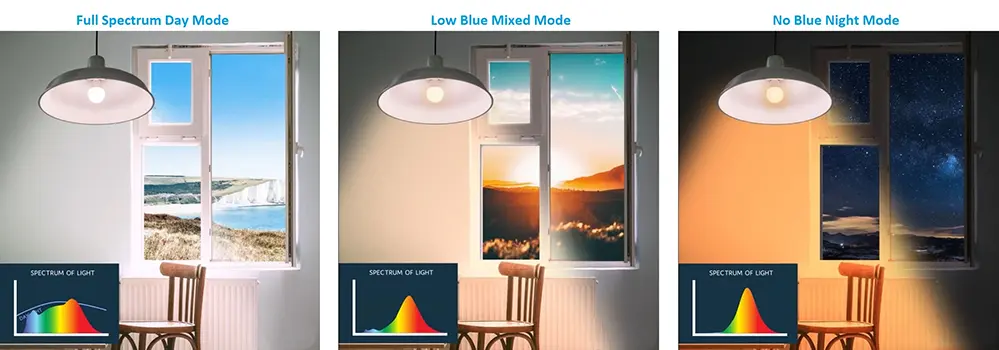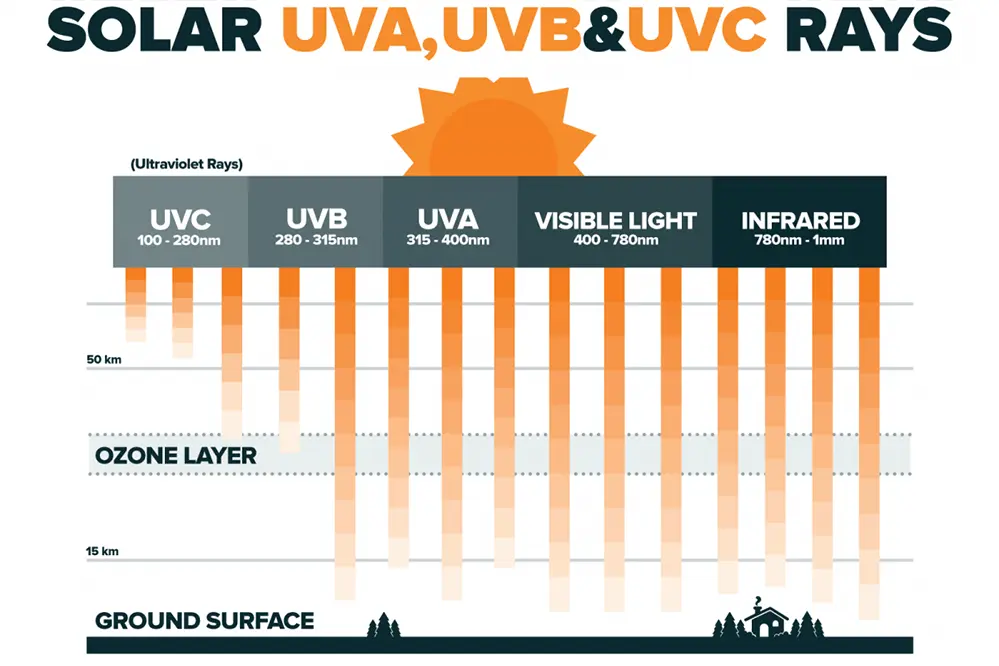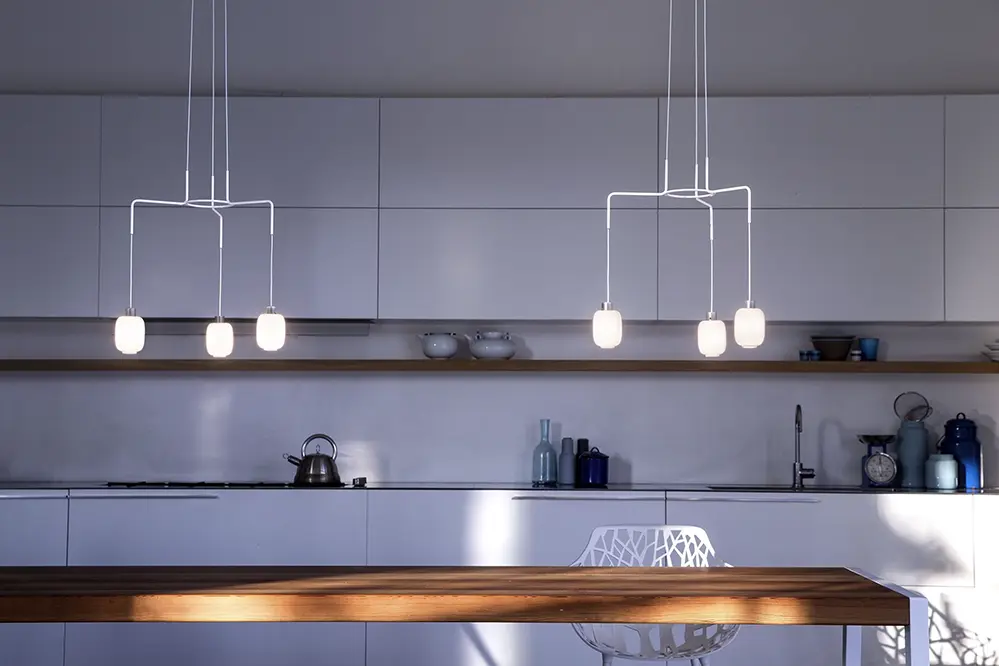For many, the struggle with inadequate lighting is a daily challenge, affecting everything from productivity to mood. Full spectrum lighting offers a solution to this common problem, providing a light source that closely mimics natural sunlight. By incorporating the full spectrum of light, this innovative approach can transform any space into a more inviting and energizing environment.
The significance of addressing lighting issues cannot be overstated. Poor lighting can lead to eye strain, fatigue, and even mood disturbances, impacting both personal and professional aspects of life. Full spectrum lighting, however, offers a way to counteract these effects, promoting better health and well-being through improved light quality.
In this guide, we will explore various solutions and insights into full spectrum lighting, from understanding its scientific basis to practical applications in everyday settings. You’ll learn how to choose the right lighting for your needs and discover the profound impact it can have on your life.
Prepare to embark on a journey that will illuminate your understanding of full spectrum lighting. With the knowledge and tools provided in this guide, you’ll be empowered to create a brighter, more vibrant environment that enhances every aspect of your life.
What Is Full Spectrum Lighting?
Full spectrum lighting emulates the natural light of the sun, offering a holistic approach to illumination that vastly enhances environments, moods, and productivity by mimicking daylight.
This lighting technology is crafted to encompass the entire electromagnetic spectrum visible to the human eye.
Historically, artificial lighting lacked this natural range, rendering spaces with limited and harsh light quality, unsuitable for well-being.
However, full spectrum lighting merges science and innovation, embracing advanced technology that delivers comprehensive wavelengths of light.
Achieving this involves sophisticated engineering to replicate not only visual intensity but also the calming, natural effects of sunlight, promoting mental and physical benefits often associated with light therapy.
Therefore, the goal is not merely to illuminate spaces but to enrich them. Full spectrum lighting exemplifies a refined commitment to quality lighting solutions that complement the human experience.
Benefits of Full Spectrum Lighting
Harnessing the power of full spectrum lighting can transform your living and working environments, creating a vibrant space that nurtures well-being and enhances productivity. This illuminative triumph is nothing short of revolutionary.
Exposure to this kind of lighting mimics natural sunlight, significantly improving mood and reducing stress for those residing within such spaces.
Remarkably, full spectrum lighting can also support circadian rhythms, which are essential for maintaining a healthy sleep-wake cycle and potentially reducing sleep disorders.
Moreover, this lighting style aids in reducing eye strain and fatigue, promoting a sense of vigor and clarity.
These lights are prevalent in enhancing plant growth indoors, making them integral in cultivating lush, thriving greenery at any time of the year.
Indeed, not only does full spectrum lighting cater to our evolutionary need for light’s warmth, but it also fosters environments where both people and plants can truly flourish.
How Full Spectrum Lighting Works
Full spectrum lighting recreates the broad range of wavelengths found in natural sunlight, providing a balanced blend of all colors of the visible spectrum that are beneficial to human health.
This type of lighting uses specialized bulbs designed to emit an even distribution of wavelengths.
The essence of its operation lies in emitting consistent radiant energy across different wavelengths, replicating the light from a clear, midday sun. Thus, it achieves a harmony of light, conducive to visual clarity, emotional balance, and optimized cognitive function.
The intricate science behind full spectrum lighting enables it to be much more than a mere replica of daylight. Users experience improved visual acuity and a heightened sense of alertness, as this lighting mimics nature’s dynamism. This invigorates environments, making them ideal for fostering well-being and productivity. Whether installed in a workspace or home, full spectrum lighting enhances the overall ambiance, ensuring a synergistic relationship between light, space, and its occupants.
Types of Full Spectrum Lights
Understanding the variety of full spectrum lights available can greatly enhance their effectiveness in meeting specific needs and preferences, offering a comprehensive illuminative experience to all users.
LED full spectrum lights are the most energy-efficient choice, using significantly less power while providing excellent light quality.
Compact fluorescent lamps (CFLs) also make suitable options, balancing energy efficiency with affordability, enabling wider accessibility.
Halogen bulbs stand out for delivering bright, white light approximating daylight, favored for tasks requiring high color accuracy and a high color rendering index.
Fluorescent light tubes find their application in larger environments, providing a broad and uniform spread of light across expansive areas, enhancing both visibility and mood.
Ultimately, the choice of full spectrum lighting hinges on identifying one’s specific lighting needs. Each technology type presents unique advantages poised to cater to diverse applications effectively.
Full Spectrum Lighting vs. Standard Lighting

Full spectrum lighting offers distinct advantages over standard lighting.
Full spectrum lights are designed to mimic natural daylight. They emit light across the entire visible spectrum, enhancing color clarity and reducing eye strain. Consequently, they offer an experience reminiscent of being outdoors under natural sunlight, thus positively influencing mood and productivity indoors.
Standard lighting falls short of achieving this balance.
Standard lights often emphasize certain wavelengths – in the case of incandescent bulbs, a warmer yellow glow dominates – which may lead to color distortion and increased visual discomfort. In contrast, full spectrum lighting delivers a balanced rendition, supporting well-being and clarity.
As research progresses, the benefits of incorporating full spectrum lighting become increasingly undeniable, enabling transformative impacts on workspaces, homes, and educational environments. Choose full spectrum lights to harness innovation that aligns with the natural world, enhancing both aesthetic and functional aspects in a visionary way.
Applications of Full Spectrum Lighting
Full spectrum lighting finds its place across various sectors, adjusting environments to better suit human well-being and productivity. From residential spaces optimizing interior ambiance, to commercial arenas boosting employee efficiency, its uses are expansive and impactful.
Homes increasingly benefit from the unique advantages full spectrum lighting offers. It can subtly shift mood, enhance color perception, and support overall wellness through increased exposure to daylight-like conditions.
In educational institutions, these lights create vibrant learning atmospheres conducive to focus and engagement. Imagine classrooms, where improved visibility and reduced eye strain encourage more dynamic interactions and better academic performances.
Healthcare facilities deploy full spectrum lighting to promote healing environments essential for patient recovery. By mimicking natural sunlight, these lights can soothe anxiety and elevate overall patient satisfaction and comfort.
Retail spaces leverage full spectrum lighting to display products in their truest colors, enticing customers with captivating visual experiences. This can significantly impact purchasing decisions and ultimately drive sales.
Fundamentally, every corner of today’s world has the potential to fulfill an unmet need for quality lighting. Full spectrum lighting represents a leap towards an enlightened future, fostering environments where human potential can truly flourish.
Health Benefits of Full Spectrum Lighting
Embracing full spectrum lighting can radically transform your well-being, enhancing your mood, energy levels, and productivity, while also bolstering your physiological and psychological health.
In essence, these extraordinary lighting systems mimic natural daylight (sunlight) to simulate a vibrant indoor environment, which aids in regulating circadian rhythms and improving sleep quality, ultimately nurturing a holistic sense of wellness.
The terms “full-spectrum” and “health-enhancing” have become synonymous as a testament to the lights’ profound wellness impacts.
Effects on Mood and Mental Health
Embracing full spectrum lighting, alongside light therapy, can significantly uplift mood and mental well-being, mirroring the positive effects of natural daylight. This illumination is known to enhance emotional stability.
By supporting the body’s circadian rhythm, full spectrum lighting helps reduce stress and anxiety levels. This type of lighting has been coined a “natural mood enhancer.”
Full spectrum lighting may decrease cortisol levels, leading to reduced stress and enhanced emotional health.
Consequently, environments that incorporate full spectrum lighting foster enhanced focus and cognitive function. This not only benefits personal mental health but also promotes an overall sense of motivation and productivity, nurturing a vibrant mental state. Transforming spaces with such lighting ultimately leads to enriched, balanced lives.
Benefits for Vision and Eye Health
Full spectrum lighting closely mimics natural sunlight, offering a balanced spectrum of light wavelengths that can significantly benefit vision and eye health. This comprehensive light source provides a visibly clearer and more vivid environment.
Eyes function optimally under the natural lighting conditions that full spectrum lighting simulates. This similarity often results in reduced eye strain and improved visual performance for individuals.
Notably, artificial lighting can cause discomfort and fatigue, while full spectrum lighting minimizes these issues. This is largely due to its natural composition that aligns with the light our eyes have evolved to process.
Moreover, this type of lighting facilitates better contrast and color perception, enabling enhanced clarity for reading and other close-up tasks. Such benefits are particularly crucial for those who spend extended periods indoors.
The subtle reduction in glare and flicker provided by full spectrum lighting contributes significantly to eye comfort, promoting healthier eyes over time. Individuals may notice a marked improvement in their ability to focus, reducing the strain on their eyesight during prolonged use.
Thus, by integrating full spectrum lighting into our environments, we are investing not just in optimal illumination but also in a future with healthier vision. Eye health becomes an achievable priority, supported by science-backed lighting solutions.
How to Choose Full Spectrum Lighting
Choosing full spectrum lighting, like any significant lighting decision, requires a nuanced approach to the myriad benefits, specifications, and applications these brilliant solutions have to offer.
First, familiarize yourself with the specific color temperature options that best match your desired ambiance.
Next, assess the lighting fixture’s compatibility with your space, considering size (recessed, pendant, or other styles) and aesthetics.
Furthermore, examine the light output for appropriate illumination levels, ensuring the brightness meets your functional needs.
Consider investing in lighting systems with adjustable features, allowing you to customize light levels, enhancing context-specific utilization. Additionally, energy-efficient options promise long-term environmental and economic benefits, making your choice sustainable.
Ultimately, the goal is to reflect your space’s essence through light. Harmonizing full spectrum lighting with other sources can elevate your interior dynamic to an entirely new level.
Installing Full Spectrum Lighting
Embarking on the journey to installation starts with selecting fixtures that best suit your environment, ensuring both efficiency and aesthetic harmony. Your choice will unlock the transformative potential of your space.
Drilling holes and mounting units require meticulous precision to achieve optimal positioning.
During installation, it’s crucial to ensure wiring compatibility, especially within existing setups. A meticulous alignment and secure fastening of fixtures enhance their longevity and reliability, reflecting your commitment to quality and excellence.
When the lights are strategically installed, the result is not just a room bathed in vibrant illumination but an entire atmosphere uplifted by your careful planning and execution. As full spectrum lighting mimics natural sunlight, it promotes productivity, mood enhancement, and wellness, capturing the profound synergy of light and space. With each light switch flick, we embrace a brighter, harmonious vision of our environments.
Adjusting to Full Spectrum Lighting
Adjusting to full spectrum lighting can profoundly transform spaces.
Transitioning to this advanced lighting system can reinvigorate both aesthetics and functionality. By offering a spectrum close to natural daylight, these lights, enhanced by light therapy, create environments that support better focus, productivity, and mood—bringing the outdoors’ vitality inside. Initially, some spaces might require minor adjustments to optimize the experience.
The key is understanding your ambient light needs.
Once the lighting is integrated, consider nuances that may need realigning to perfect the experience—whether adjusting color temperature or tuning brightness settings for distinct activities. Full spectrum lighting is adaptable, providing flexibility for various needs and preferences.
This change cultivates an invigorating atmosphere, inspiring creativity and well-being. As you settle into these naturally inspired environments, you may observe increased vitality and focus, reminiscent of the beneficial effects of natural sunlight. Embrace the opportunity to harmonize both living and working spaces for an enhanced, balanced lifestyle.
Cost Considerations for Full Spectrum Lighting
Costs vary based on several factors.
When considering full spectrum lighting, initial expense is paramount. The upfront costs may appear higher than traditional lighting, primarily due to advanced technology and design involved. However, it’s crucial to view the investment as one that enhances not just illumination quality, but overall well-being.
Initial costs are offset by long-term savings.
The efficiency of these lights can result in lower energy consumption – an upfront premium paid can translate into meaningful cost reductions in the long run – and their durability extends replacement intervals significantly.
Finally, consider the broader impact of investing in technology that supports energy-efficient living, reflecting goals of the 2023 green movement and beyond. Such investments not only enhance spaces aesthetically but contribute positively towards sustainable practices for a more resilient future.
Best Settings for Full Spectrum Lighting
To achieve optimal ambiance, consider the application and desired effects when calibrating full spectrum lighting settings.
For instance, in home environments aiming for a natural daylight feel, ensure your settings mimic the full range of sunlight. This involves adjusting the color temperature to around 5000K to 6500K, which is ideal for spaces where accurate color representation and a vibrant atmosphere are desired. Such settings also enhance productivity and mood by simulating the invigorating spectrum of natural light during daylight hours.
Conversely, settings may be adjusted for a warmer ambiance in relaxation areas. In workplaces, cooler settings can stimulate alertness and focus. It’s about balancing brightness and warmth to support the daily transitions of human activity within your spaces.
Ultimately, leveraging advanced controls to personalize full spectrum lighting can revolutionize any environment. By understanding user needs and environmental context, these settings can boost efficiency and well-being, harmonizing seamlessly with the evolving demands of modern living. Feel empowered to explore and experiment, ensuring your lighting solution continually complements both personal preference and professional requisites flawlessly.
Maintenance of Full Spectrum Lights
Ensuring the longevity and performance of full spectrum lighting requires regular, albeit simple, maintenance. Routine care not only preserves optimal light output but also extends the life of your investment.
Start by routinely checking for dust accumulation, which can diminish efficiency. Dust-covered fixtures should be gently cleaned using a microfiber cloth or a mild cleaning solution.
Moreover, routinely inspect wiring and connections for any wear or damage, addressing issues (preferably through professional assistance) to prevent disruptions.
Positioning efforts are equally vital; maintaining optimal positioning to avoid obstructive conditions that could hamper light distribution enhances overall effectiveness.
Continue your diligence in maintaining air circulation around your lights, facilitating natural heat dissipation, and mitigating potential overheating. This practice significantly contributes to the durability and efficiency of your setup.
Embrace these practices, ensuring your lights’ resilience against time. The result? A brilliantly sustaining space, underpinned by the reassuring presence of robust, full spectrum lighting.
Common Misconceptions
When it comes to full spectrum lighting, many assumptions can lead to misunderstandings about its true nature and benefits.
One prevalent misconception is that full spectrum lighting is unnecessary unless used for specific applications, such as in photography or for specialized plant growth. While it’s true these sectors often demand particular lighting conditions, it’s reductive to say that the benefits of full-spectrum lighting are confined solely to these areas. Its holistic replication of natural light offers vast advantages applicable to everyday environments, from homes to offices.
Additionally, there is sometimes a belief that all lighting labeled “full spectrum” is identical. In actuality, not all full spectrum lighting solutions are created equal. Differences in quality and technology can lead to varying degrees of spectral output, impacting the effectiveness and suitability of the light for different environments.
Furthermore, another misunderstanding relates to the investment value of full spectrum lighting solutions. Some might assume that the initial cost is disproportionately high compared to conventional lighting options, without considering the long-term energy efficiency and enhanced well-being it fosters. Such misconceptions overlook the profound potential that these lighting solutions hold in transforming spaces, promoting well-being, and contributing sustainably to both personal and professional settings.
Everything You Need to Know About Full Spectrum Lighting
The allure of full spectrum lighting lies in its ability to mimic the sun’s natural light, offering myriad benefits for human health and productivity, which continue to be widely recognized worldwide.
Clarity on what constitutes full spectrum is essential for making informed decisions.
Full spectrum lighting provides an innovative approach to incorporating lighting technology that caters to a multitude of needs by delivering a balance of colors that help enhance mood, focus, and the body’s natural cycles.
The wavelength range emitted closely resembles the spectrum of natural sunlight, providing not only a vibrant aesthetic but also an array of health benefits, from reducing eye strain to boosting productivity and improving sleep quality. As such, full spectrum lighting represents a key investment in fostering environments that nurture both wellness and performance.
Conclusion
Embracing full spectrum lighting is a step towards a brighter future.
This transformative lighting technology, acclaimed for its capacity to replicate natural sunlight, stands poised to redefine how we engage with indoor environments, fostering spaces that nurture well-being and productivity. Its myriad benefits extend beyond mere illumination, offering a holistic enhancement to our living and working conditions. By embracing this innovation, individuals and organizations alike can champion a commitment to health and cognitive excellence.
Unquestionably, the potential impact of full spectrum lighting resonates deeply within both personal and professional spheres. It bridges the gap between nature and technology, creating ambient conditions that seamlessly cater to our physiological and psychological needs, thereby transforming spaces into incubators of inspiration and efficiency.
In conclusion, full spectrum lighting embodies the future of human-centric lighting, promising to illuminate our lives with both power and purpose. By harnessing its unique qualities, we not only enrich our environments but also fortify our health and enhance our ability to perform at our best. Now is the time to embrace this illuminating future, confident in the knowledge that we are stepping into a world where light is truly synonymous with life.





